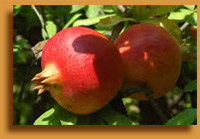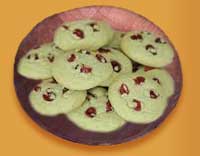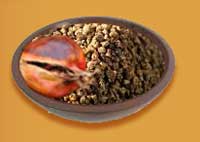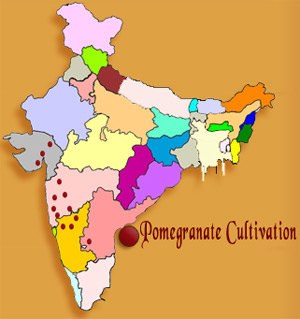POMEGRANATE
Introduction
The pomegranate is an orderly, curved shrub that can raise upto 20 or 30 ft., but most naturally to 12 to 16 ft in height. Dwarf diversities are also known. It is generally deciduous, but in a few areas the leaves will stick with the tree. The stem is covered by a red-brown bark which later on turns gray. The branches are rigid, pointed and often spiky. There is a sturdy tendency to dupe from the bottom. Pomegranates are also long-living plants. There are samples in Europe that are recognized to be over 200 years of age. The dynamism of a pomegranate declines after about 15 years, however. The pomegranate has lustrous, rubbery leaves that are thin and lance-shaped.
The eye-catching ruby, white or multicolored flowers of the plant are more than an inch across and have 5 to 8 wrinkled petals and a red, plump, tubular calyx which is present on the fruit. The flowers may be single or grouped in two's and three's at the last part of the branches. The pomegranate is self-pollinated and also cross-pollinated by insects. Cross-pollination enlarges the fruit set production. Wind pollination is irrelevant.
Common Names
Punica Granatum is the scientific name of the plant. In common Indian languages IE in Hindi is called as Anardana; in Bengali is called as Dalimb; in Gujarati is called as Dalamb, Dadam; in Kannada is called as Dalimbari; in Kashmiri is called as Daan; in Malayalam is called as Maathalanarakam; in Marathi is called as Dalimb; in Oriya is called as Dalima; in Punjabi is called as Anardana; in Sanskrit is called as Dadima; in Tamil is called as Mathalam pazham; in Telugu is called as Danimma Pandu; in Urdu is called as Anardana; in Assamese is called as Dalim.
History
The pomegranate is an inhabitant of the region of Persia which is now contemporary day Iran and the western Himalayan range, and has been grown in Iran, Afghanistan, Pakistan, India, Russia, Iraq, Azerbaijan, and the Mediterranean region for some millennia. The carbonized extract of the fruit has been renowned in premature Bronze Age levels of Jericho in Israel. A huge dried out pomegranate was discovered in the tomb of Djehuty, the butler of Queen Hatshepsut in Egypt. Mesopotamian cuneiform record mention pomegranates from the mid-third millennium BC.
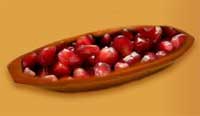
It is also broadly grown in South China and in Southeast Asia, whether formerly spread along the Silk Route or brought in by sea traders is not known. Kandahar is well-known in Afghanistan for its best quality pomegranates.Although not local to Korea or Japan , the pomegranate is extensively grown there and many cultivators have been urbanized. It is broadly used for bonsai because of its flowers and for the strange twisted bark that older specimens can achieve.
Pomegranate agriculture in Italy is subtle all through the southern region, particularly in Olevano sul Tusciano and the rest of Campania's area. The prehistoric city of Granada in Spain was renamed after the crop during the Moorish period. Spanish colonists later established the fruit to the Caribbean and Latin America, but in the English colonies it was fewer at home. "Do not use the pomegranate unwelcomingly, an unfamiliar person that has come so far to pay his compliments to you" wrote the English Quaker Peter Collinson to the botanizing John Bartram in Philadelphia, 1762.
Plant it alongside the side of the house, attach it close to the wall. In this method it thrives magnificently with us, and flowers delightfully, and bears fruit every year.
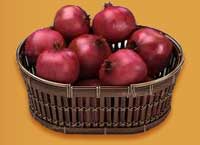
The pomegranate had been brought out as an unusual to England till the earlier century, but the dissatisfaction that it did not set its fruit there led to its recurring opening to the American colonies, including New England. It succeeded in the South. Bartram got a drum of pomegranates and oranges from a reporter in Charleston, South Carolina in 1764.The crop is native to Southern Europe and Mediterranean area. It is dispersed in the temperate regions of both the hemispheres.
It is broadly grown in Iran, Afghanistan and Baluchistan. In India it is cultivated in almost all states but cultivated in large scales in the States like Maharashtra, Karnataka, Andhra Pradesh, Uttar Pradesh, Tamil Nadu, Gujarat, Rajasthan and Himachal Pradesh. It blooms best in places with a hot parched summer, with irrigation. In moist weather the excellence of fruit is not good. It grows up to a altitude of 1600 meter. It can withstand alkaline and wet soil.
Uses
Cooking
The whole seed is eaten raw, though soggy, delicious aril is the desired part. The flavor differs depending on the breed of pomegranate and its ripeness. The pomegranate fruit juice can be extremely sugary or sour, but the majority of the fruits is sensible in taste, with sour annotations from the acidic tannins enclosed in the aril juice. Pomegranate juice has been an accepted drink in Persian and Indian cuisine, and began to be extensively distributed in the United States and Canada in 2002. Wild pomegranate seeds are being used as a spice known as anardana, most seen in Indian and Pakistani cuisine, but also as a replacement for pomegranate syrup in Persian cuisine.
Dehydrated whole arils can regularly be acquired in ethnic Indian subcontinent markets. These seeds are estranged from the flesh, dehydrated for 10-15 days and used as an acidic agent for chutney and curry making. Ground anardana when used, consequences in a deeper flavoring in dishes and stops the seeds from getting wedged in teeth. Seeds of the untamed pomegranate variety branded as daru from the Himalayas are looked upon as a quality source for this spice.
Medicine
The skin of the fruit and the bay of the pomegranate tree is used as a conventional medicine against diarrhea, dysentery and intestinal parasites. The seeds and juice are seen as a tonic for the heart and throat, and categorized as a bitter-astringent, a constituent under the Ayurvedic system, and considered a healthful offset to a diet high in sweet-fatty constituent.The harsh traits of the flower juice, rind and tree bark are considered important for a range of purposes,such as stopping nose bleeds and gum bleeds, toning skin, firming-up sagging breasts and diagnosing hemorrhoids. Pomegranate juice is also used as eyedrops as it is supposed to slow down the development of cataracts.
Pomegranate Cultivation in India
